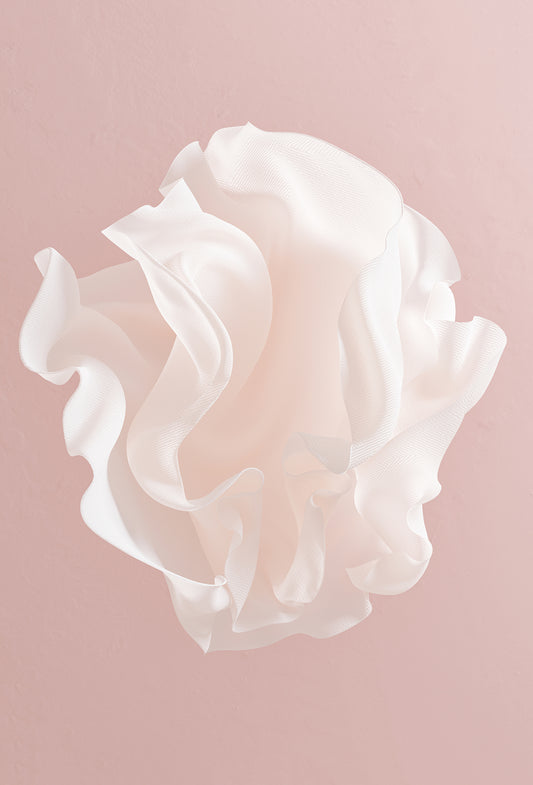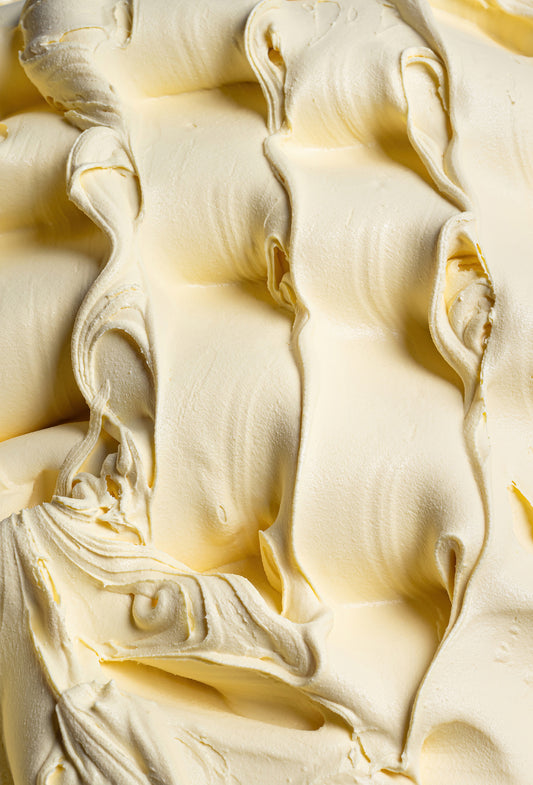The Iris is a flower most prized for its beauty and while most types are odourless, a number of flowering Iris plants do have a scent. However, in the realms of perfumery the part of the plant that matters is the root system (or more accurately, the rhizome system) which, in that context, is known as orris.
Orris is mainly taken from the Pallida (native to Croatia) and Germanica (native to Europe in general) species. China is also a significant cultivator of Germanica nowadays. Historically in perfume the Pallida type is more sought after, as it has been considered more elegant, but orris Germanica is also a wonderful product with a richer chocolate character in comparison to the powderiness of Pallida.
Orris has been used since the time of the Ancient Greeks and today we use the very same methods they did to extract the scent from the roots. But of course we also now have complex modern methods.
Fresh rhizomes are of little value to the perfumer and so they are dried. The longer they are dried, the higher the concentration of Irone, a chemical found naturally in the roots which is extremely diffusive and highly scented. Access to irones is the main reason that orris has been so prized over the millennia. A fresh root has very little irone in it, but by the time it is three years old, that quantity will have increased to 15%. These days artificial rapid aging is also possible and it is now the most popular process.
Orris extracts come in these five main forms:
1. Dried powder or chips — simply the chopped up dried rhizomes. This is used to fix potpourri scents and powders and in contexts requiring dry material.
2. Orris Tincture — this is produced by soaking dried rhizomes (in powder form) in fine perfumer's alcohol. This is an excellent fixative for perfumes and while it is traditionally added to the alcohol prior to blending with the perfume concentrate, it can be added directly to your juice in small quantities (it is best to try to avoid adding too much alcohol to perfume raw concentrate).
3. Orris Resinoid [Pallida | Germanica]— this is a thick dark brown past which comes from extracting the odiferous matter from dried orris roots with alcohol which is then evaporated off. It is, in some ways, a highly concentrated alcohol-free tincture!
4. Orris Butter — sometimes also referred to as Orris Concrete, this material is solid like wax and the color of cream. It is a true essential oil, being extract by steam distillation and it is one of the few essential oils which comes in solid form. This is the most commonly used form of orris these days and it comes with varying irone amounts, the most luxurious being 20%.
5. Orris Absolute — This is almost never seen today. It is a clear liquid and it should not be confused with orris butter which, owing to its solid nature, is sometimes wrongly referred to as absolute. True orris absolute has 80% irones(!) and can cost well over $100,000 per kilogram! Despite the rarity and price it has found its way in to some truly marvelous perfumes. The original Chanel No 5 made under Mme Chanel's direction had 0.5% and the more recent near-mythical masterpiece Dior Homme (2005 edition) by Olivier Polge contained 0.25% pure.
Now that you understand Iris naturals, check out our article Understanding Ionones to get better acquainted with the iris and violet synthetics.





